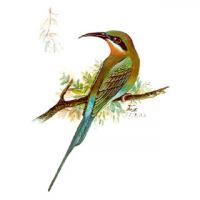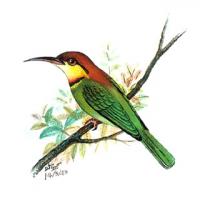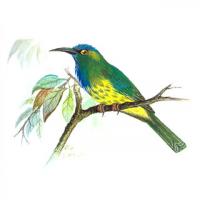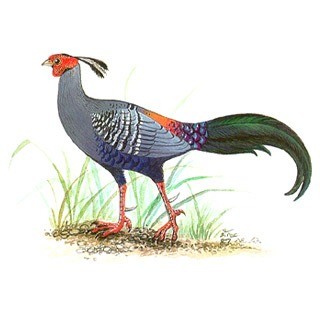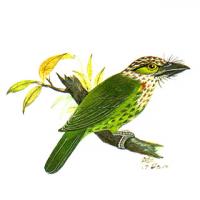Green Bee-eater (Merops orientalis)
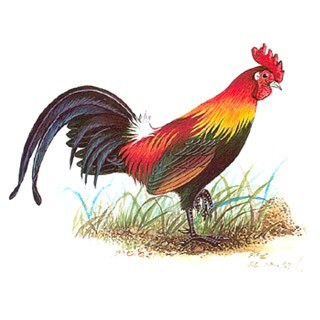
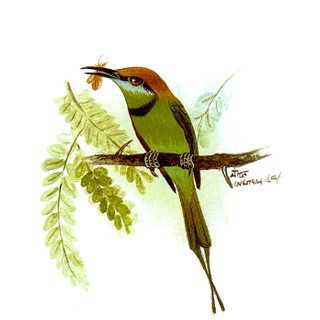
Order: CORACIIFORMES
Family: MEROPIDAE Bee-eaters
Scientific name: Merops orientalis
English name: Green Bee-eater
Characteristic: Size 20 cm. A small, big-headed slender-shaped bird with long, slender slightly down-curved bill. Body plumage bright yellowish green, more golden yellow on head and nape; a distinct black mask extending through eye to side of neck and a dark crescent present across the upper breast; tail relatively long with the middle pair of feathers extending out far beyond the others, thus looked as though having a pointed long tail.
Distribution: Africa, Middle East, India, Southwest Chian, Myanmar, Thailand and Indo-china. It occurs throughout Thailand, except in the south.
Habitat: Keeps to open grounds, from the plain up to 1,500 m altitude, whether it may be grass fields, scrub forest, crop fields, paddy fields or deserted grounds. In Sakaerat forest, they confine to grass fields among the dry dipterocarp forest and in the dry dipterocarp forest itself.
Habit: Seen in pairs or small flocks perching on low trees or exposed dry branches, looking for passing insect preys. They hawk after the aerial preys as well as vegetation-staying preys. Its favourite prey is bees; it can avoid being stung by its geniusly manipulation of rubbing the bee' s abdomen vigorously against its perch which will loosen the bee' s only weapon. Breeding time starts from March to June, when a pair will dig a deep hollow into steep river bank or earthen mound. A clutch of white 5-6 eggs will be laid and the incubation period will last 13-14 days.
Status: A common resident in Sakaerat forest. It is a protected wild animal by local wildlife law.









